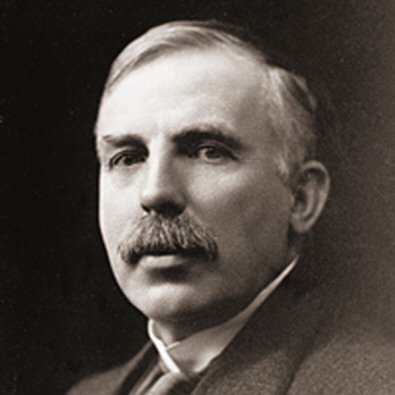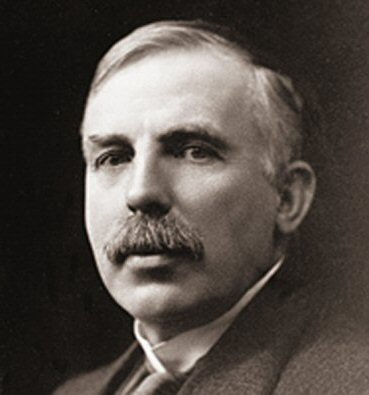June 6, 2019 — By Steven B. Krivit —
Sixth in a Series of Articles on the Rutherford Nitrogen-to-Oxygen Transmutation Myth
The myth that the discovery of the first artificial transmutation (nitrogen to oxygen) belonged to Sir Ernest Rutherford was one of the longest-running myths in the history of modern physics. Who caused nearly all physics and science history textbooks written in the last half-century to incorrectly attribute Rutherford as the world’s first successful alchemist? Who caused the Nobel Foundation, countless universities and science institutions to give the credit to Rutherford when it, in fact, belonged to a research fellow working in Rutherford’s Cambridge lab named Patrick Blackett?
Physicist Sir Ernest Rutherford (1871-1937) is a legendary figure in science history. Some people consider Rutherford to be among the 10 greatest physicists in history. Some call him the father of modern physics. The world’s first confirmed artificial transmutation of one element into another has been described by many people as among Rutherford’s three greatest accomplishments. The discovery, however, belonged instead to a research fellow named Patrick Blackett, who worked in Rutherford’s lab at Cambridge University. Although a few historians recorded the discovery correctly, the myth that the discovery belonged to Rutherford was pervasive for 70 years. But how did this myth originate? This article answers that question. Continue reading »



